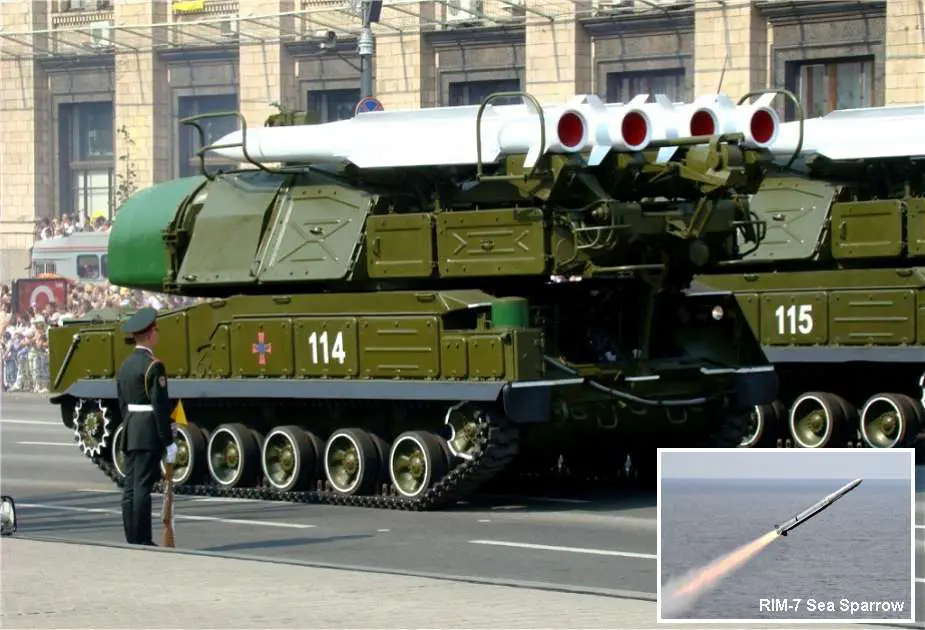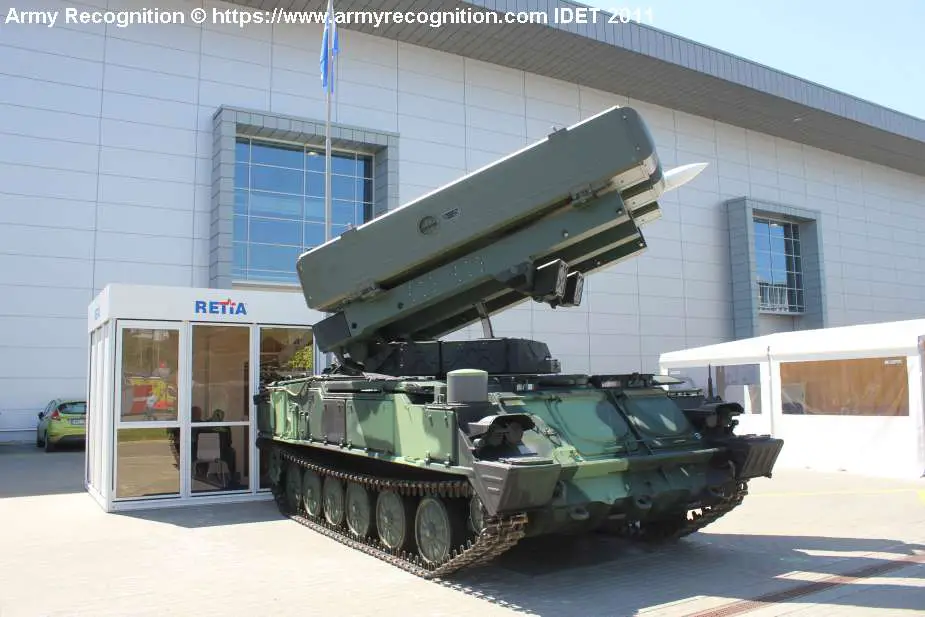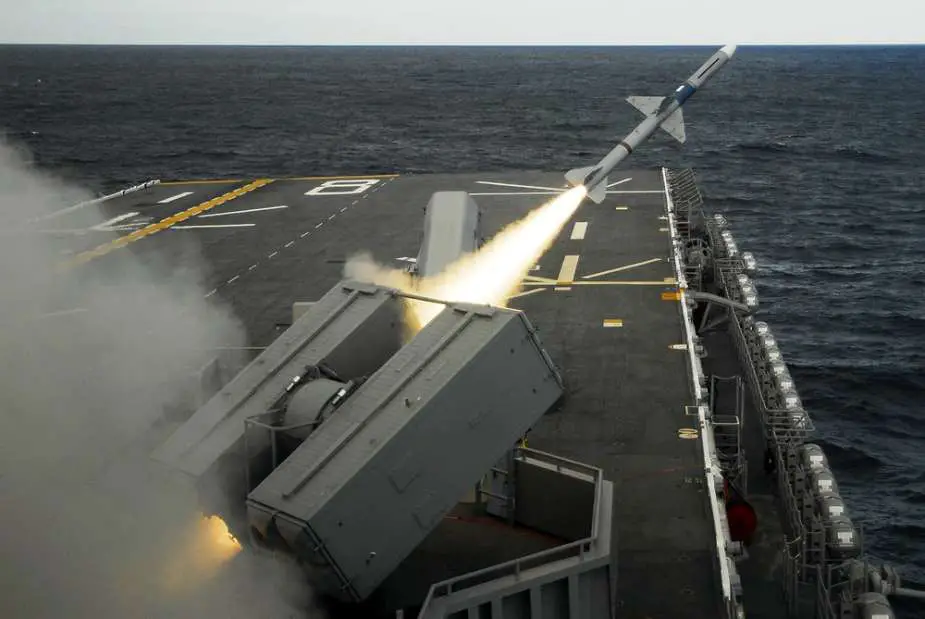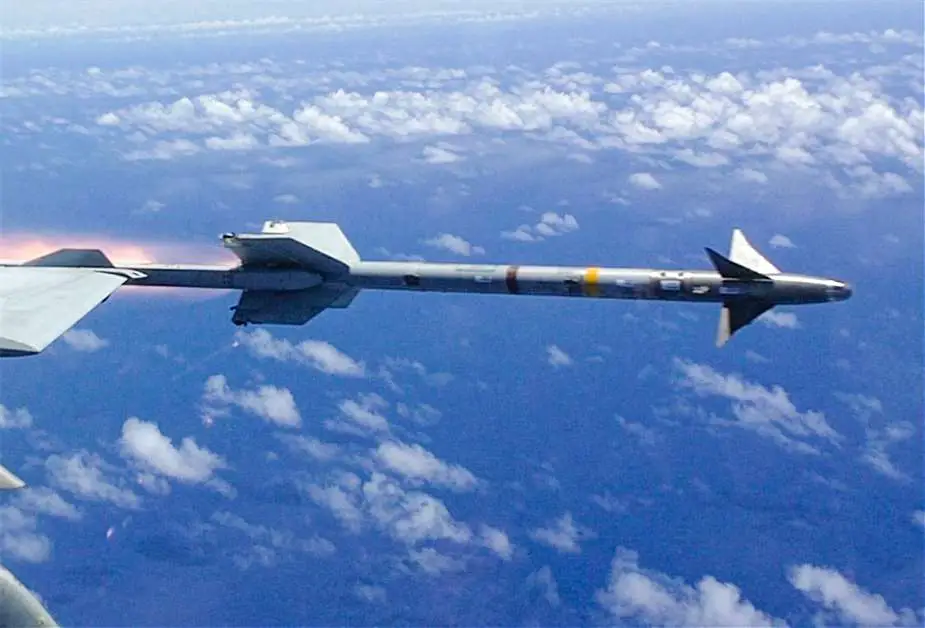Breaking news
Ukraine to Field Innovative FrankenSAM Air Defense Missile Systems in Collaboration with US.
In a significant development for Ukraine's military capabilities, Oleksandr Kamishin, Ukraine’s Minister of Strategic Industries, announced the imminent deployment of groundbreaking 'FrankenSAM' air defense missile systems on the Ukrainian battlefield. These hybrid systems, a result of Ukrainian-American collaboration, ingeniously merge Soviet-era technology with modern American missile capabilities.
Follow Army Recognition on Google News at this link

Ukrainian 9K37 Buk SAMS during the Independence Day parade in Kyiv, Ukraine in 2008. For the FrankenSAM program, the tracked chassis of the vehicle will be armed with RIM-7 Sea Sparrow (Picture source Wikimedia)
The FrankenSAM program, aptly named for its combination of different technological 'parts', is an innovative approach to bolster Ukraine's air defenses amid increasing aerial threats from Russian forces, including drone and missile attacks. This program reflects a strategic effort to develop low-cost, effective air defense systems locally, with the support of American expertise and technology.
American officials have outlined the specifics of the FrankenSAM program: it integrates advanced American surface-to-air missiles with refitted Soviet-era launchers or radars already in use by Ukrainian forces. There are two primary variants of these systems. The first variant combines Soviet Buk tracked chassis with American RIM-7 Sea Sparrow short-range anti-aircraft missiles. The second variant merges Soviet-era radars with AIM-9M Sidewinder short-range air-to-air missiles. These systems have undergone extensive testing in the United States over the past months and are expected to be deployed in Ukraine by this fall.
Ms. Cooper, the deputy assistant secretary of defense for Russia, Ukraine, and Eurasia policy, emphasized the critical role of FrankenSAMs in addressing the urgent need for enhanced air defense in Ukraine. She noted that these systems are key to filling vital gaps in Ukraine's current capabilities.

In 2011, MBDA presented during the IDET defense exhibition in the Czech Republic a modernized version of the Soviet-made SA-6 using the original tracked chassis armed with three Aspide 2000 Missiles. (Picture source Army Recognition Group)
This program is not the first of its kind. In 2011, missile manufacturer MBDA showcased a modernized version of the Czech Army's Soviet-made SA-6 Gainful air defense missile system. This modernization involved equipping the system with three Aspide 2000 Missile launchers instead of the older Russian Kub launcher station. The Aspide 2000 missile, an upgraded variant of the Aspide multirole missile, significantly enhances the system's intercept range, exceeding 23 km in all directions.
The 2K12 KUB of the Czech army, with its ability to track, intercept, and engage targets up to 12 km away and speeds reaching Mach 1.8, serves as a testament to the potential effectiveness of such upgrades.

The amphibious assault ship USS Makin Island (LHD 8) launches a Sea Sparrow missile during combined combat system ship qualifications trials.
The FrankenSAM program represents a novel and cost-effective approach to enhancing Ukraine's air defense capabilities, reflecting a blend of resourcefulness and international collaboration in the face of evolving military challenges. The first variant is based on the Buk-M1 tracked armored chassis (NATO code-named SA-11 Gadfly) which is a Russian-made air defense missile system that carries a radar and a launcher with four missiles. It can fire 9M38 and 9M38M1 missiles. It will be armed with American-made RIM-7 Sea Sparrow anti-aicraft missiles.
The RIM-7 Sea Sparrow is a critical component of the FrankenSAM air defense system, as mentioned in the recent news about Ukraine's military advancements. It is an American-made short-range anti-aircraft and anti-missile weapon, primarily designed for naval use to protect ships from attacking missiles and aircraft.
Developed in the 1960s, the RIM-7 Sea Sparrow has undergone numerous upgrades to enhance its capability. The missile is a radar-guided weapon system, which means it uses radar to track and guide itself to the target. Its high agility and speed make it particularly effective in intercepting fast-moving targets.
The missile is typically launched from a ship's vertical launch system or a standalone launcher, depending on the vessel's configuration. Once launched, the Sea Sparrow missile uses semi-active radar homing to track its target. The missile's warhead is designed to detonate either upon direct hit or proximity to the target, ensuring effectiveness against a variety of aerial threats. It has a range of approximately 18.5 to 50 kilometers (10 to 27 nautical miles).
Its integration into the FrankenSAM system represents a significant innovation, as it adapts a naval weapon for land-based use. By pairing the Sea Sparrow with Soviet-era Buk missile launchers, the FrankenSAM system effectively repurposes existing defense infrastructure with modern technology, enhancing Ukraine's defensive capabilities against aerial threats, including drones and fighter aircraft.
The Sea Sparrow's proven effectiveness, adaptability, and relatively low cost make it an ideal choice for such hybrid defense systems, offering a blend of reliability and innovation in air defense.

An F/A-18F Super Hornet fighter of the ‘Diamondbacks’ of Strike Fighter Squadron (VFA) 102 fires a Sidewinder AIM-9M missile during a missile exercise. (Picture source U.S. DoD)
The AIM-9M Sidewinder, a key element of the second variant of the FrankenSAM air defense system, is an advanced, short-range air-to-air missile developed by the United States. This missile is part of the wider Sidewinder family, which has seen extensive service in various air forces around the world.
The AIM-9M variant, specifically, is an upgrade over its predecessors in the Sidewinder series, featuring improved infrared homing guidance and countermeasures resistance. The infrared homing capability allows the missile to track and engage targets based on the heat signatures they emit, such as those from aircraft engines. This makes the AIM-9M particularly effective in shooting down enemy aircraft in close-range dogfights or for defensive purposes. Its maximum effective range is typically around 8 to 10 kilometers (approximately 5 to 6.2 miles).
One of the distinctive features of the AIM-9M Sidewinder is its high maneuverability, enabled by its unique design and thrust-vectoring control. This allows the missile to make very tight turns, making it hard for enemy aircraft to evade once locked-on. Additionally, the missile has a solid track record for reliability and effectiveness in combat situations.
In the context of the FrankenSAM system, the integration of the AIM-9M Sidewinder represents an innovative approach to land-based air defense. Typically an air-to-air missile used by fighter aircraft, adapting the AIM-9M for use with ground-based, Soviet-era radar systems is a significant shift in conventional military technology application. This adaptation allows Ukrainian forces to effectively utilize existing radar infrastructure to target and neutralize aerial threats, particularly in the context of close-range engagements where the AIM-9M's precision and agility are invaluable.
Defense News January 2024























